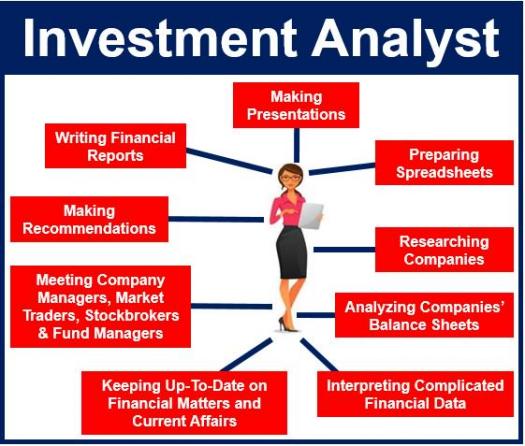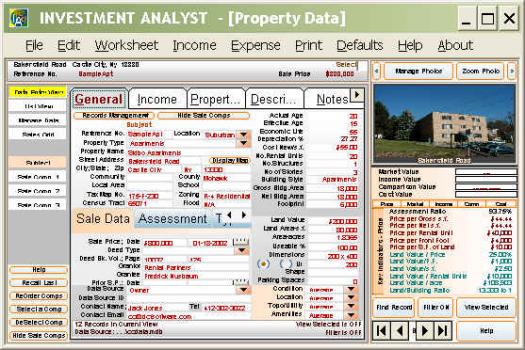What Do You Know About Investment Analyst?

Think about it, what do you call someone who makes the right calls when and where it concerns investments. Now, how well do you know their job?
- 1.
Investments analysts are generally divided into?
- A.
Buy-side
- B.
Sell-side
- C.
Hold-side
- D.
A and B only
Correct Answer
D. A and B onlyExplanation
Investment analysts are generally divided into two main categories: buy-side and sell-side. Buy-side analysts work for firms that manage their own investments, such as mutual funds, hedge funds, or pension funds. They analyze investment opportunities and make recommendations on what securities to buy or sell. Sell-side analysts, on the other hand, work for brokerage firms or investment banks. They provide research and recommendations on securities to their clients, such as institutional investors or individual investors. The "A and B only" answer choice correctly identifies the two main divisions of investment analysts.Rate this question:
-
- 2.
In financial analysis, a buy-side analyst is referred to as the?
- A.
Broker
- B.
Agent
- C.
Fund manager
- D.
None of the above
Correct Answer
C. Fund managerExplanation
A buy-side analyst in financial analysis refers to a professional who works for an asset management firm or a hedge fund and is responsible for conducting research and making investment decisions on behalf of their firm. They analyze various financial data, market trends, and company performance to identify investment opportunities. Therefore, the correct answer is "Fund manager" as they manage the funds and make investment decisions for their firm.Rate this question:
-
- 3.
Investment analyst works for a company which buys and holds?
- A.
Value
- B.
Bonds
- C.
Stock
- D.
None
Correct Answer
C. StockExplanation
An investment analyst typically works for a company that buys and holds stocks. Stocks represent ownership in a company and are considered a form of equity investment. Bonds, on the other hand, are debt instruments, and while they can be held by investment companies, they are not the primary focus of an investment analyst. Value and None are not specific investment options and do not accurately describe the typical activities of an investment analyst.Rate this question:
-
- 4.
In financial analysis, sell-side research is often used as?
- A.
Put
- B.
Call
- C.
Soft-money
- D.
None of the above
Correct Answer
C. Soft-moneyExplanation
Sell-side research is often used as a source of soft-money in financial analysis. Soft-money refers to the indirect benefits or perks received by financial institutions or analysts, such as access to company management, corporate events, or potential business opportunities. Sell-side research provides valuable insights and recommendations on stocks or investments, which can attract clients and generate revenue for the financial institution. Therefore, sell-side research is an important tool for financial analysis, as it helps generate soft-money benefits for the firm.Rate this question:
-
- 5.
Writing report or notes expressing opinions is always a part of?
- A.
Buy-side
- B.
Sell-side
- C.
Agent
- D.
None of the above
Correct Answer
A. Buy-sideExplanation
The correct answer is "Buy-side" because writing reports or notes expressing opinions is typically a part of the buy-side of financial markets. Buy-side refers to institutions or individuals that buy and hold securities for investment purposes, such as asset management firms, pension funds, or individual investors. These entities often conduct research and analysis to make informed investment decisions and may express their opinions through written reports or notes. On the other hand, sell-side refers to entities that facilitate the buying and selling of securities, such as investment banks or brokerage firms, and their focus is more on providing research and analysis to support trading activities rather than expressing opinions.Rate this question:
-
- 6.
Investment analyst job is often not required for?
- A.
Call
- B.
Stop
- C.
Put
- D.
Buy-side
Correct Answer
D. Buy-sideExplanation
The investment analyst job is often not required for the buy-side. Buy-side refers to the side of the financial market that involves the purchase of securities or assets for the purpose of investment. Investment analysts are typically employed on the buy-side to conduct research and analysis on potential investment opportunities. Therefore, it is unlikely that the investment analyst job would not be required for the buy-side.Rate this question:
-
- 7.
The buy-side is sometimes considered more?
- A.
Prestigious
- B.
Professional
- C.
Scholarly
- D.
All of the above
Correct Answer
D. All of the aboveExplanation
The buy-side is sometimes considered more prestigious because it involves managing large amounts of money and making investment decisions on behalf of institutional clients. It is also considered more professional as it requires specialized knowledge and skills in areas such as portfolio management and risk analysis. Additionally, the buy-side is often associated with scholarly research and analysis, as professionals in this field are expected to stay updated on market trends and developments. Therefore, all of the given options - prestigious, professional, and scholarly - are valid explanations for why the buy-side is sometimes considered more.Rate this question:
-
- 8.
Investment analyst often begin careers on the sell-side at large?
- A.
Brokerage
- B.
Banks
- C.
House
- D.
Family
Correct Answer
B. BanksExplanation
Investment analysts often begin their careers on the sell-side at large banks because banks have well-established and reputable investment divisions. These divisions provide analysts with valuable training and exposure to various financial products and markets. Additionally, banks have extensive networks of clients and resources, which allows analysts to gain experience and build relationships in the industry. Starting at a bank also offers opportunities for advancement and specialization in specific sectors or asset classes. Therefore, banks are a popular choice for investment analysts to kick-start their careers on the sell-side.Rate this question:
-
- 9.
Traditionally, financial analyst use what is called?
- A.
Technical analysis
- B.
Fundamental analysis
- C.
Parabolla analysis
- D.
None of the above
Correct Answer
B. Fundamental analysisExplanation
Financial analysts traditionally use fundamental analysis to evaluate the value of a company or investment. This involves analyzing financial statements, economic factors, industry trends, and company management to determine the intrinsic value of a stock or security. Technical analysis, on the other hand, involves studying past price and volume data to predict future price movements, while parabolla analysis is not a recognized method used by financial analysts.Rate this question:
-
- 10.
Investment analyst obtain information by studying public records and findings by the?
- A.
Brokerage
- B.
Broker Firm
- C.
Bank
- D.
Company
Correct Answer
D. CompanyExplanation
Investment analysts obtain information by studying public records and findings by the company. This means that they gather information from various sources such as financial statements, annual reports, and other publicly available information directly from the company. By analyzing this information, investment analysts can make informed decisions and recommendations regarding investments.Rate this question:
-
Quiz Review Timeline +
Our quizzes are rigorously reviewed, monitored and continuously updated by our expert board to maintain accuracy, relevance, and timeliness.
-
Current Version
-
Mar 21, 2023Quiz Edited by
ProProfs Editorial Team -
Mar 02, 2018Quiz Created by
Timmy198
 Back to top
Back to top












